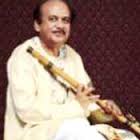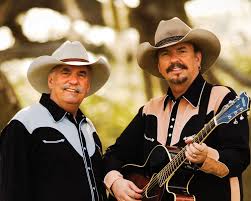Once again, the media vanishes
Pt Raghunath Seth
SAD times we live in. It’s been a week since noted flautist Pt Raghunath Seth passed away, and there’s not been a single word in the media. Even the famed Wikipedia hasn’t updated the information. Only a handful of disciples, musicians and fans have paid tribute over the social media.
Seth had his own significant contribution to the world of bansuri. Besides Hindustani classical music, he composed for films like ‘Damul’ and ‘Ek Baar Phir’, ad jingles and documentaries. A disciple of two great musicians – vocalist-musicologist Pt S N Ratanjankar and flautist Pt Pannalal Ghosh – he also did numerous shows in the West, accompanying Steve Gorn, an American who plays the bansuri.
In the world of bansuri, while Pannalal Ghosh was the pioneering senior, Pts Hariprasad Chaurasia, Vijay Raghav Rao, Raghunath Prasanna and Raghunath Seth comprised the next generation of esteemed practitioners. And some of the albums Seth released with Magnasound were nothing short of magic.
Despite that level of genius and respect, the gentleman went away unreported and silently. And this is not the first time this is happening in Hindustani classical music. The deaths of very senior musicians like flautist Pt Vijay Raghav Rao, sitar maestro Ustad Shamim Ahmed Khan, and vocalists Yeshwantbua Joshi and Lakshmi Shankar were not covered too. But for a touching column in ‘Mint Lounge’ newspaper by Shubha Mudgal, the death of harmonium great Purushottam Walawalkar didn’t get media attention.
Even Ustad Vilayat Khan, one of the greatest sitar players ever, got very sparing mention. In contrast, there have also been musicians who have been given due coverage, moreso because the media was familiar with them.
In such a scenario, it is natural to blame the ignorance or even indifference of today’s media, whether it is print or electronic. That is true, of course. But there are other factors that come into play – namely public relations, the existence of lobbies and camps and the general tendency to cover glamour and celebrity more than the art itself.
Let me cite a personal example, taken from my days at Mid Day. When Vilayat Khan passed away in March 2004, we had originally planned to devote an entire page. Besides the obituary chronicling his life, I had got tributes from other musicians, and a story on who all had come to pay homage during the final journey.
The coup, of course, was that I actually managed to get Pandit Ravi Shankar to pay a very graceful tribute, even though it was a known thing that he and Vilayat Khan had been arch professional rivals. Needless to say, only the Ravi Shankar story managed to make it to print, with Ravi Shankar getting the larger photograph too.
If one looks at today’s media scenario, the truth is that there are very few writers dedicated to the classical music beat. Barring ‘The Hindu’ from Chennai, which naturally gives more prominence to Carnatic music, there is hardly any consistent coverage. One finds one-off articles and columns here and there, but the space is limited and display less prominent than popular film music. Compared to Bollywood stars and item girls, music gets very little attention. Even on television, In Sync is the only channel to focus on classical music – the rest believe in insufficient or no coverage.
Thus, when a senior artiste passes away, the media is either caught unawares, or simply does not give space because there are glamorous and ‘saleable’ things to write about in newspapers or show on television. Here, artistes who have had good public relations skills or who have been close to some of the ‘star’ musicians get more attention.
Undeniably, this is a sad state of affairs. Musicians like Raghunath Seth, Vijay Raghav Rao, Lakshmi Shankar, Yeshwantbua Joshi, Shamim Ahmed Khan and Purushottam Walawalkar have all made huge contributions to classical music. The truth is that they never achieved celebrity status, and never even wanted to, even though they were as brilliant as anybody else. If only the media could be more sensitive and sensible.

